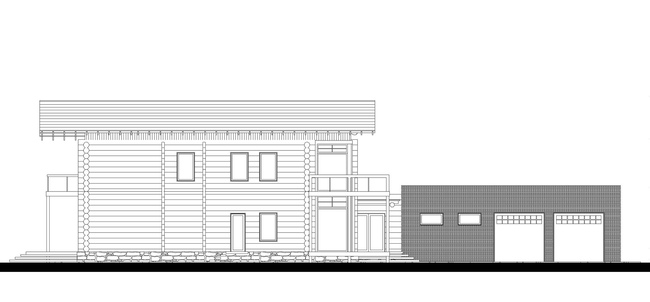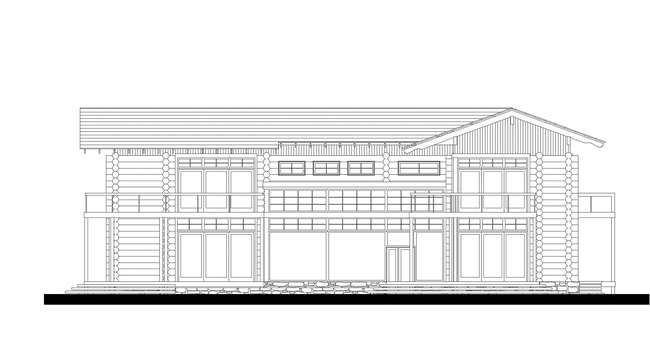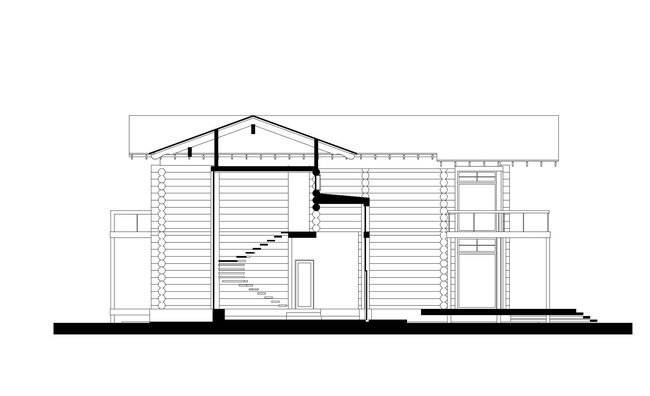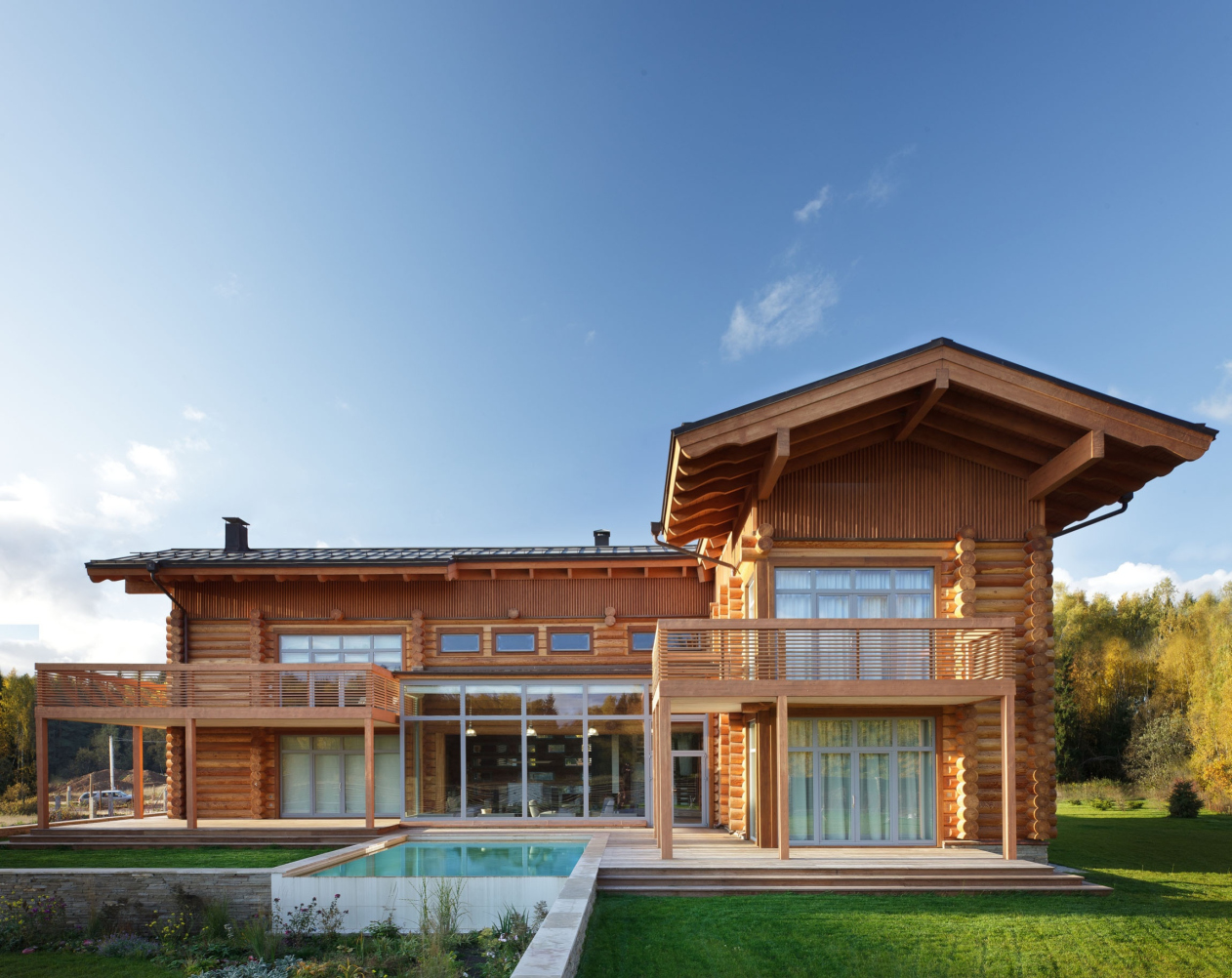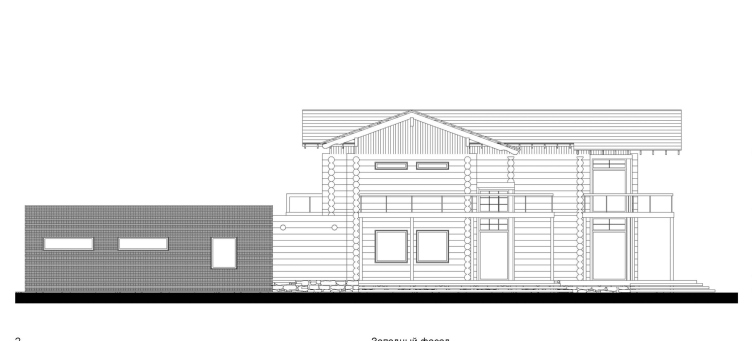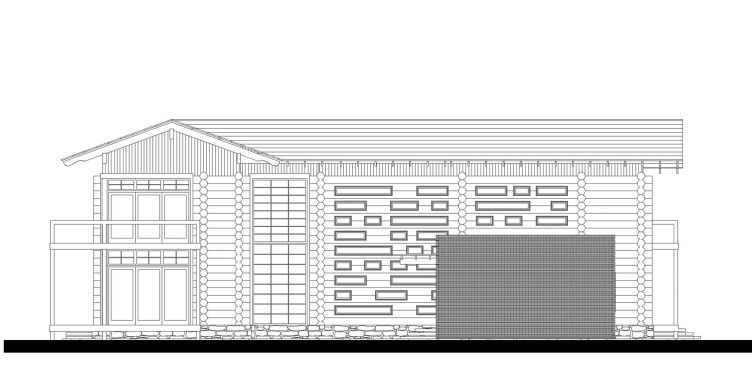The customer clearly defined
his wishes for the future house: it must be a log house, but a modern one. By
“modern” the client meant not only the architectural style of the building but
the layout as well. In particular, the center of the interior was to be a
bright multifunctional room, and as for the outside, the house was to be
supplemented with a garage, wide terraces and a pool. “I found this proposition
interesting because the client was sincerely charmed by the log house style,
but his demands to the future cottage were absolutely incompatible with the
izba-type house, – Roman Leonidov shares – To make these wishes come true we
had to work out an unusual structural scheme and approach the issue of the
layout very thoroughly”.
On the plan the house is shown
as a sophisticated figure – it is a letter “S” tipped on its side that is made
up of rectangular rooms of different sizes and functions. The center of the
first floor, just as the customer wanted, is a huge living room combined with
the dining room, which can be accessed through the office, guest room, sauna,
as well as the stairs leading to the second floor. The second floor is reserved
for private rooms of the owners - the bedroom, the dressing room, the nursery,
and the billiard room and library. A small “tail” of the garage is transversely
fixed to the long beam of the letter «S», oriented along the east-west axis,
and combines two entrance areas. The porch and the “appendix” of the garage are
directed to the north, while most of the interior rooms are oriented to the
south side, where the architects attach several large terraces, and insert an
open-air pool between them.
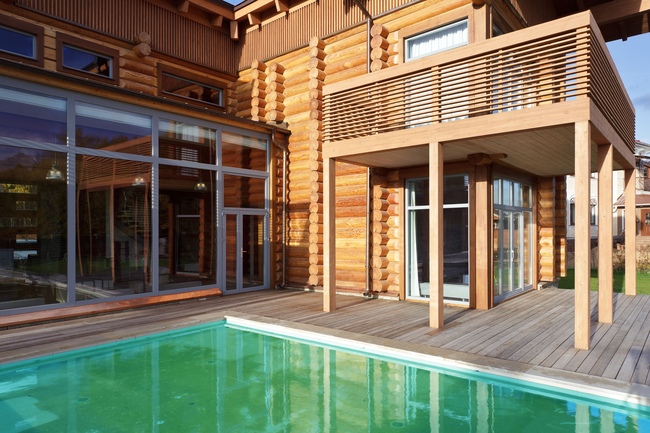
It is interesting that not only
the rooms of the first floor get terraces, but the second floor as well – wide
balconies supported by wooden square poles. These very laconic constructions
are particularly in striking contrast with the large-diameter rounded logs, which
make up the walls of the house itself. Perhaps, they would look very alien to
each other if it were not for the stained-glass windows that give maximum
daylight and sun to the house. Paned surfaces are so broad that they visually
supersede the massive log walls – one glance at the facades of the house is
enough to see that the stacked logs don’t play the main constructive role.
However, this is not a decoration either – it’s just the way it came out, as
Roman Leonidov says, simply the framework became just a part of the design
concept. In fact, the architect took a traditional izba and expanded it to the
size that allows to easily accomodate all the functions necessary to the
customer.
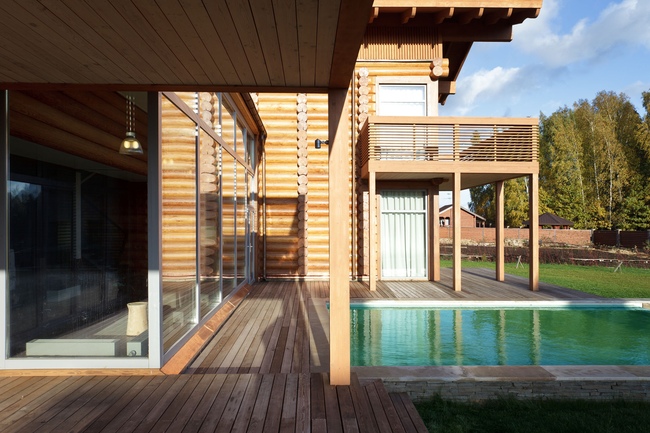
The walls were pulled out with
a framework of vertical and horizontal beams. Made of timber, they form a
lattice whose cells the architect fills with stained glass, or, again, wood. As
a result, the facade made up of one material shows
absolutely different textures – massive convex logs with overhanging ends
suddenly give place to a flat surface of the timber that Leonidov camouflages
with fine rack. The space under the roof is decorated with this very vertical
hatching – this visually separates the traditional gable roof from the
traditional timbered wall and thereby enhances the feeling that one gets at the
very beginning: the “izba” which became the prototype for the house was split
into separate parts that the architect uses and designs more than freely. In
support of this Leonidov builds a separate roof for that part of the house,
where the bedrooms and the attic are: the advanced overhanging length make up a
reliable protection from the midday sun for the terrace, and the high ridge of
the roof gives archetypical appearance to this thoroughly modern house.
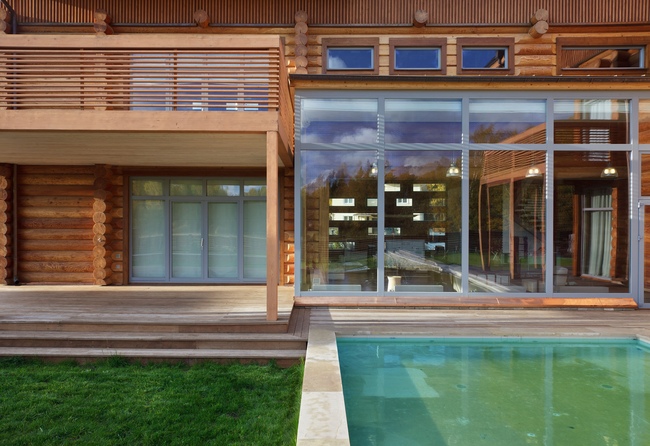
And if the south side is made
fully transparent, then northwards, to the main entrance and the nearby road,
the architect builds up a shield-facade. On the one hand, Leonidov did not want
to make this part of the house too “buttoned-up”, but on the other hand, he had
to secure the main area of the house from the eyes of the passers’-by. The
solution was a nontrivial one: just as the architect expands the structure of
the five-walled house, he draws apart parts of logs adding transparent elements
instead of them. These paned fragments of different width turn the wall into an
intricate puzzle which gives glimpses of greenery around the house and at night
the lights of the neighboring houses can be seen without violating its privacy.
Deliberately avoiding
stylization, Roman Leonidov counted on the succession of the architectural
elements characteristic of rural buildings of the past, and, following the
preferences of the customer, functional program and the desire to join the
exterior and the interior, built a house, in which the features of traditional
log houses are naturally interwoven with the artistic and constructional
techniques of modern architecture.
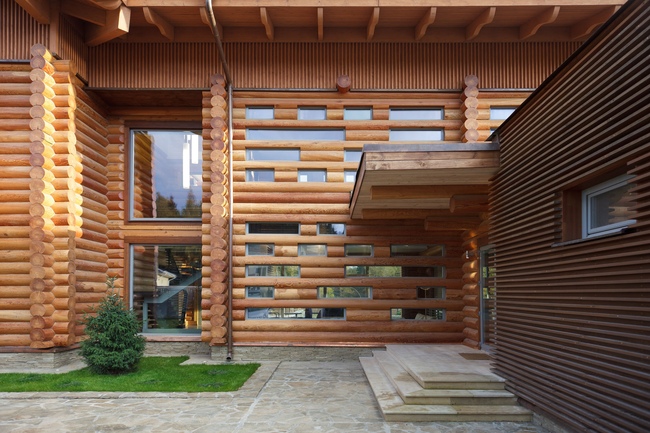
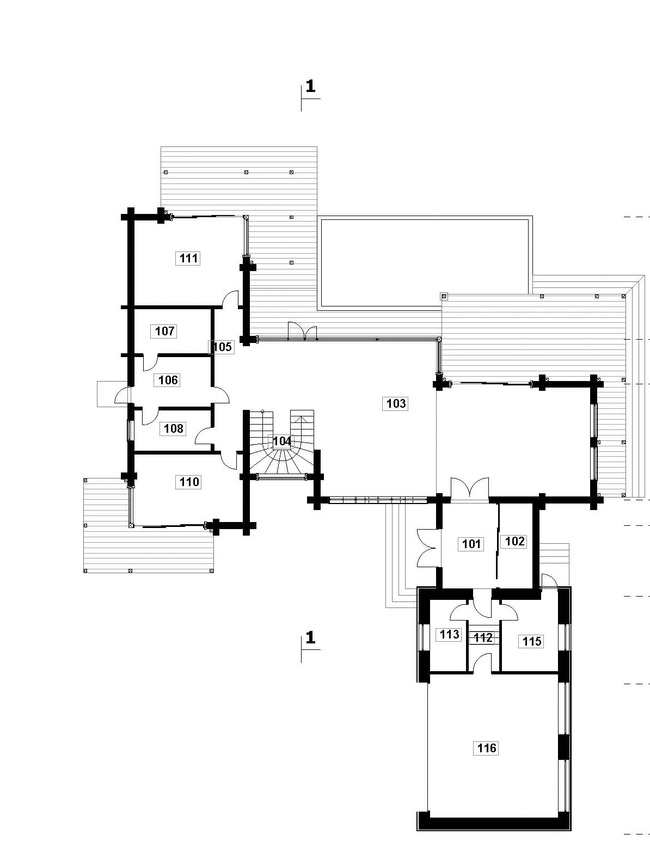
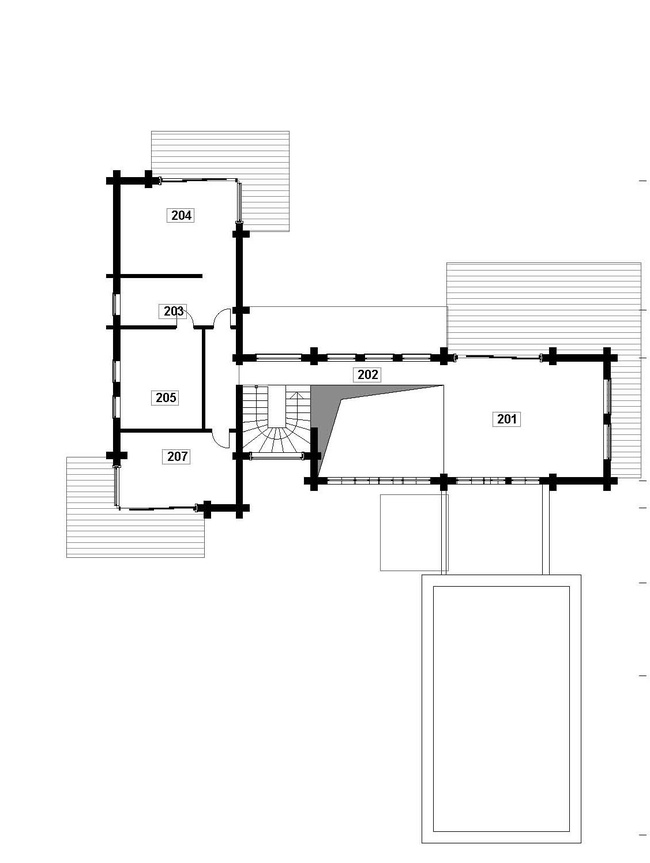
Second floor layout
